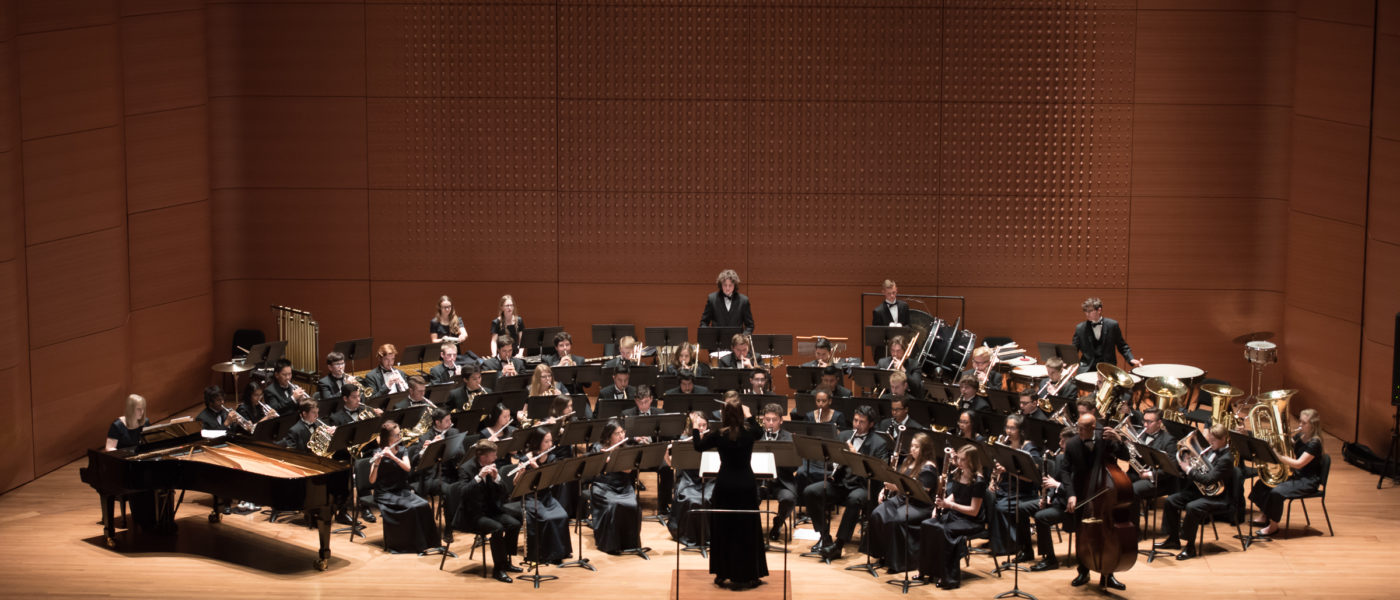Distinguished Concerts International New York (DCINY) presents Green Valley High School Symphonic Wind Orchestra/ Hershey Symphony Festival Strings and Hershey Symphony Orchestra in Review
Green Valley High School Symphonic Wind Orchestra (NV), Diane Koutsulis, conductor
Hershey Symphony Festival Strings, Hershey Symphony Orchestra (PA), Sandra Dackow, conductor; Odin Rathnam, violin
Alice Tully Hall at Lincoln Center, New York, NY
April 10, 2017
Distinguished Concerts International New York (DCINY) presented a mixed program, with ensembles from a Henderson, Nevada high school, a group of middle-school string players From Hershey, Pennsylvania , and an adult all-volunteer symphony, also from Hershey. If some of the playing had its rough edges, all of it succeeded in the task of communicating emotion from players to audience. The program featured two excellent female conductors for a change, an all-too-rare occurrence.
The evening began with the Nevada group and Steven Bryant’s Ecstatic Fanfare, a little ragged in ensemble, but a festive beginning. This was followed by the second movement, Yellow, from Philip Sparke’s A Colour Symphony, which emphasized the upper ranges of the winds to create the impression of intense sunshine. I wonder if Sparke knew about Sir Arthur Bliss’ A Colour Symphony, dating from the 1920s. A rousing performance of James Clifton Williams, Jr.’s The Sinfonians (Symphonic March), commissioned by a musical fraternity, showed rhythmic verve. Green Valley saved the best for last however, a new work entitled there are no words [sic], a programmatic work about the horrific murder of nine worshippers in Charleston, SC, two years ago that did not trivialize tragedy. As its composer James M. Stephenson states, it is really not a portrayal of events, but a reflection of personal feelings about it. This work featured absolutely beautiful playing from the principal flute, oboe, English horn, clarinet, and euphonium. The group achieved true transparency, a testament to their ability to listen to each other, and to the compositional quality of the piece. To honor the dead, there were nine clusters at the beginning and another nine, decreasing in volume, at the end; their names were read by a student prior to beginning the work.
After intermission, the Hershey Symphony Festival Strings, composed entirely of middle-schoolers, took the stage for three clever arrangements (two Mozart, one traditional English hornpipe) by their conductor Sandra Dackow, who is an expert creator of pedagogical materials for developing musicians. All the movements were quick; perhaps one slower one could have shown greater range. But the most impressive thing for me was the justness of their intonation (playing in tune). This is a quality that often suffers, not only in the young, but even in grown-up ensembles. Way to go, middle-schoolers; they are obviously getting great leadership from Ms. Dackow. And wasn’t she clever to sneak in a surreptitious morsel of Tchaikovsky for the double-basses right near the end of the hornpipe.
The Hershey Symphony, soon to be in its fiftieth year, is composed of musicians who voluntarily give of their time and talent for the purpose of creating a rich cultural experience for the people of their region. Ms. Dackow led them through three “chestnuts” of the repertoire. As a conductor, she has a delightful quality I call “inner expansion,” by which I mean a certain feeling for elasticity and arrival points, which she then transmits to her players. The only slight miscalculation, I felt, was the lack of inclusion of at least one contemporary work. Humperdinck’s famous Overture to his opera Hansel und Gretel spoke in its alternately prayerful and stentorian, Wagner-inspired ways. She was then joined by virtuoso violinist Odin Rathnam for Sarasate’s evergreen Ziguenerweise. He has not only the chops but the temperament to dispatch this work and not make it seem difficult at all; he even brought out the humor at certain points, which caused audience members to giggle appropriately. His tone was sweet and true throughout, particularly in the stratospherically high notes the piece reaches. The performance contained many gratifying rubato details that were carefully and thoughtfully worked out between soloist and conductor. One could definitely hear how certain manic “gypsy” passagework found its way into such a disparate piece as Ravel’s Tzigane! The evening finished with a grand account of the graduation day staple: Elgar’s Pomp and Circumstance March No. 1. Ms. Dackow’s inner expansion here gave extra glory to the “Land of Hope and Glory” melody so beloved to all.

